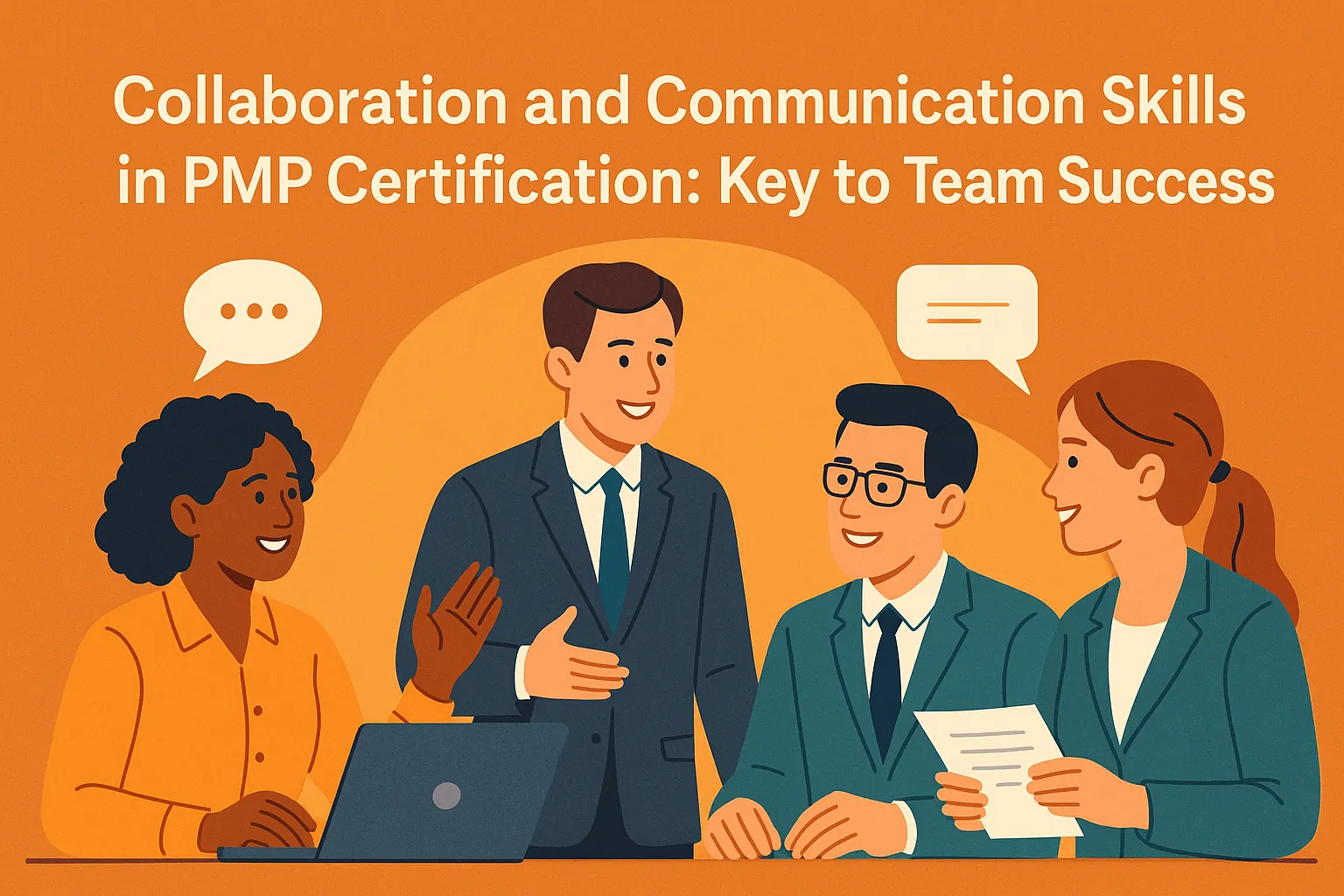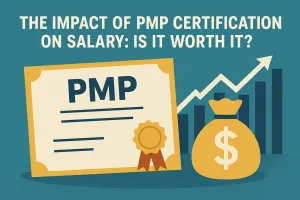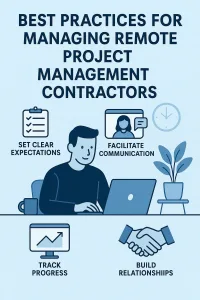Introduction
The ability to collaborate effectively and communicate clearly is paramount to achieving success. The Project Management Professional (PMP) certification, offered by the Project Management Institute (PMI), is a globally recognized credential that signifies a project manager’s expertise and commitment to the profession. This certification not only validates a professional’s knowledge of project management principles but also emphasizes the critical role of collaboration and communication in driving project success.
Defining PMP Certification
The PMP certification is designed for project managers who wish to demonstrate their proficiency in managing projects and leading teams. It encompasses a comprehensive understanding of project management methodologies, tools, and techniques, as well as the ability to apply these in real-world scenarios. By obtaining this certification, professionals gain credibility and recognition in the field, which can lead to enhanced career opportunities and increased earning potential.
The Significance of Collaboration and Communication
Collaboration and communication are the lifeblood of any successful project. Effective collaboration fosters a sense of teamwork, encourages diverse perspectives, and enhances problem-solving capabilities. When team members communicate openly and transparently, they can share ideas, address challenges, and align their efforts towards common goals. This synergy is essential for navigating the complexities of projects, ensuring that all stakeholders are engaged and informed throughout the project lifecycle.
Moreover, strong communication skills help project managers articulate project objectives, expectations, and progress to stakeholders, thereby minimizing misunderstandings and fostering trust. In a landscape where projects often involve cross-functional teams and multiple stakeholders, the ability to communicate effectively becomes even more critical.
Enhancing Skills through PMP Certification
The PMP certification curriculum places a significant emphasis on the development of collaboration and communication skills. Through its focus on best practices, methodologies, and real-world applications, the certification equips project managers with the tools they need to facilitate effective teamwork and communication. Participants learn how to create a collaborative environment, manage conflicts, and engage stakeholders, all of which are essential for driving project success.
Understanding Collaboration in Project Management
Collaboration is a fundamental aspect of project management that significantly influences the success of any project. In the context of Project Management Professional (PMP) certification, understanding collaboration is essential for team leaders and project managers who aim to foster a productive and cohesive work environment. Here’s a closer look at what collaboration entails and its critical role in project management.
Defining Collaboration and Its Importance
Collaboration in project management refers to the process where team members work together towards a common goal, sharing knowledge, skills, and resources. It is characterized by open communication, mutual respect, and a commitment to collective success. The importance of collaboration in a team setting can be summarized as follows:
- Enhanced Problem-Solving: When team members collaborate, they bring diverse perspectives and expertise to the table, which can lead to innovative solutions and more effective problem-solving.
- Increased Engagement: Collaborative environments foster a sense of ownership and accountability among team members, leading to higher levels of engagement and motivation.
- Improved Efficiency: By working together, teams can streamline processes, reduce redundancies, and enhance overall productivity, ultimately leading to faster project completion.
Various Forms of Collaboration
Collaboration can take many forms within project management, each contributing uniquely to the project’s success:
- Cross-Functional Teams: These teams consist of members from different departments or areas of expertise, allowing for a more holistic approach to project challenges. For instance, a project team might include members from marketing, finance, and operations, ensuring that all relevant perspectives are considered.
- Stakeholder Engagement: Effective collaboration extends beyond the project team to include stakeholders such as clients, suppliers, and other external parties. Engaging stakeholders early and often helps to align expectations, gather valuable feedback, and foster a sense of partnership throughout the project lifecycle.
- Virtual Collaboration Tools: In today’s digital age, collaboration often occurs through various online platforms and tools that facilitate communication and project management. Tools like Slack, Microsoft Teams, and Asana enable teams to collaborate in real-time, regardless of geographical barriers.
How Effective Collaboration Leads to Better Project Outcomes
The impact of effective collaboration on project outcomes cannot be overstated. Here are some key ways in which collaboration contributes to project success:
- Higher Quality Deliverables: Collaborative efforts often result in higher quality outputs, as team members can review and refine each other’s work, leading to more thorough and polished deliverables.
- Faster Decision-Making: When teams collaborate effectively, they can make decisions more quickly, as they have access to a broader range of insights and expertise. This agility is crucial in dynamic project environments where timely decisions can significantly affect project trajectories.
- Stronger Relationships: Collaboration fosters stronger interpersonal relationships among team members, which can lead to better communication and cooperation in future projects. A cohesive team is more likely to work well together, even under pressure.
The Role of Communication in Team Success
Effective communication is a cornerstone of successful project management, particularly in the context of the Project Management Professional (PMP) certification. This certification not only equips project managers with essential skills but also emphasizes the importance of collaboration and communication within teams. Here are some key points that highlight the role of communication in fostering collaboration and ensuring project success.
Different Communication Styles and Their Impact on Teamwork
Understanding various communication styles is crucial for project managers and team leaders. Each team member may have a unique way of expressing ideas, providing feedback, and engaging in discussions. The primary communication styles include:
- Assertive Communication: This style is characterized by confidence and clarity. Assertive communicators express their thoughts and needs while respecting others, fostering an open environment for dialogue.
- Passive Communication: Individuals with this style may avoid expressing their opinions or needs, which can lead to misunderstandings and unresolved issues within the team.
- Aggressive Communication: This style often involves dominating conversations and disregarding others’ viewpoints, which can create conflict and hinder collaboration.
- Passive-Aggressive Communication: This indirect style can lead to confusion and resentment, as individuals may express dissatisfaction subtly rather than addressing issues openly.
Recognizing and adapting to these styles can significantly enhance teamwork by promoting a culture of respect and understanding, ultimately leading to more effective collaboration.
The Importance of Active Listening and Feedback
Active listening is a vital component of effective communication in project management. It involves fully concentrating on the speaker, understanding their message, and responding thoughtfully. Here’s why active listening is essential:
- Enhances Understanding: By actively listening, team members can grasp the nuances of discussions, leading to better comprehension of project goals and tasks.
- Builds Trust: When team members feel heard, it fosters trust and encourages open communication, which is essential for collaboration.
- Facilitates Constructive Feedback: Active listening allows for more meaningful feedback, as team members can address specific points raised during discussions, leading to improved performance and morale.
In addition to active listening, providing constructive feedback is crucial. Feedback should be specific, timely, and focused on behaviors rather than personal attributes. This approach not only helps individuals improve but also strengthens team dynamics by promoting a culture of continuous improvement.
Communication Tools and Techniques in Project Management
To facilitate effective communication, project managers can leverage various tools and techniques. Some commonly used communication tools include:
- Project Management Software: Tools like Trello, Asana, and Microsoft Project help teams track progress, assign tasks, and communicate updates in real-time.
- Collaboration Platforms: Applications such as Slack, Microsoft Teams, and Zoom enable seamless communication, allowing team members to share ideas, conduct meetings, and collaborate on documents.
- Regular Check-ins: Scheduled meetings, whether weekly or bi-weekly, provide opportunities for team members to discuss progress, address challenges, and align on project objectives.
- Visual Aids: Utilizing charts, graphs, and other visual tools can enhance understanding and retention of information, making it easier for teams to grasp complex concepts.
By integrating these tools and techniques into their communication strategies, project managers can create an environment that fosters collaboration, enhances team performance, and ultimately leads to project success.
Key Collaboration and Communication Skills Taught in PMP Certification
Effective collaboration and communication are paramount for achieving project success. The Project Management Professional (PMP) certification equips team leaders and project managers with essential skills that foster teamwork and enhance project outcomes. Here are some core skills related to collaboration and communication that are developed through PMP certification:
Core Skills Developed Through PMP Certification
- Conflict Resolution: One of the critical skills taught in PMP certification is conflict resolution. Project teams often face disagreements due to differing opinions, priorities, or misunderstandings. PMP training provides strategies for identifying the root causes of conflicts and techniques for resolving them amicably. This skill is vital for maintaining a positive team environment and ensuring that conflicts do not derail project progress.
- Negotiation: Negotiation skills are essential for project managers who must often balance the needs and expectations of various stakeholders. PMP certification teaches effective negotiation techniques that help project managers advocate for their team’s needs while also considering the interests of stakeholders. This skill is crucial for reaching agreements that satisfy all parties involved, thereby fostering collaboration and commitment to project goals.
- Stakeholder Management: Understanding and managing stakeholder expectations is another key component of PMP training. Project managers learn to identify stakeholders, assess their influence and interest, and develop strategies for engaging them throughout the project lifecycle. Effective stakeholder management ensures that all voices are heard, which enhances collaboration and increases the likelihood of project success.
Contribution to Team Dynamics and Project Success
The skills acquired through PMP certification significantly contribute to improved team dynamics and overall project success. By mastering conflict resolution, project managers can create a more harmonious work environment, which encourages open communication and collaboration among team members. This positive atmosphere leads to increased productivity and innovation, as team members feel safe to share ideas and feedback.
Negotiation skills enable project managers to align team objectives with stakeholder expectations, ensuring that everyone is on the same page. This alignment fosters a sense of shared purpose and commitment, which is essential for driving projects forward. Furthermore, effective stakeholder management helps to build trust and rapport, which are critical for long-term collaboration.
The Role of Emotional Intelligence
Emotional intelligence (EI) plays a pivotal role in effective communication and collaboration within project teams. PMP certification emphasizes the importance of EI in understanding and managing one’s own emotions as well as recognizing and influencing the emotions of others. Project managers with high emotional intelligence can navigate complex interpersonal dynamics, respond to team members’ needs, and foster a supportive environment.
By developing emotional intelligence, project managers enhance their ability to communicate effectively, resolve conflicts, and build strong relationships with stakeholders. This skill set not only improves team collaboration but also contributes to a more resilient and adaptable project team, capable of overcoming challenges and achieving success.
Implementing Collaboration Strategies in Projects
Collaboration is a cornerstone of successful project management, particularly emphasized in the Project Management Professional (PMP) certification. This section outlines actionable strategies that project managers and team leaders can implement to enhance collaboration within their teams, ultimately leading to improved project outcomes.
Techniques for Building a Collaborative Culture
Foster Open Communication:
- Encourage team members to share ideas and feedback openly. Regular check-ins and team meetings can create a safe space for discussion, allowing everyone to voice their opinions and concerns.
- Utilize active listening techniques to ensure that all team members feel heard and valued, which can significantly enhance trust and collaboration.
Establish Clear Roles and Responsibilities:
- Clearly define each team member’s role within the project. This clarity helps prevent overlaps and confusion, allowing team members to collaborate more effectively by understanding how their contributions fit into the larger project goals.
- Use RACI (Responsible, Accountable, Consulted, Informed) charts to clarify responsibilities and enhance accountability within the team.
Encourage Team-Building Activities:
- Organize team-building exercises that promote relationship-building and trust among team members. These activities can range from informal social gatherings to structured workshops focused on collaboration skills.
- Consider virtual team-building activities if your team is remote, ensuring that all members can participate and engage.
Tips for Using Project Management Tools to Facilitate Communication
Leverage Collaboration Software:
- Utilize tools like Slack, Microsoft Teams, or Asana to facilitate real-time communication and collaboration. These platforms allow team members to share updates, documents, and feedback instantly, reducing the need for lengthy email threads.
- Implement project management software that includes features for task assignment, progress tracking, and document sharing, ensuring that everyone is on the same page.
Set Up Regular Updates and Notifications:
- Use project management tools to automate reminders and updates about project milestones and deadlines. This keeps everyone informed and engaged, fostering a sense of shared responsibility.
- Encourage team members to use these tools to provide status updates on their tasks, promoting transparency and accountability.
Create a Centralized Knowledge Base:
- Develop a shared repository for project documentation, resources, and best practices. This knowledge base can serve as a reference point for team members, ensuring that everyone has access to the information they need to collaborate effectively.
- Regularly update this repository to reflect the latest project developments and lessons learned.
Methods for Measuring Collaboration Effectiveness and Making Improvements
Conduct Regular Surveys and Feedback Sessions:
- Implement anonymous surveys to gather feedback on collaboration practices within the team. Questions can focus on communication effectiveness, team dynamics, and areas for improvement.
- Hold retrospective meetings at the end of each project phase to discuss what worked well and what could be improved regarding collaboration.
Track Collaboration Metrics:
- Establish key performance indicators (KPIs) related to collaboration, such as the frequency of team interactions, the number of collaborative tasks completed, and the quality of team outputs.
- Analyze these metrics to identify trends and areas where collaboration may be lacking, allowing for targeted interventions.
Encourage Continuous Improvement:
- Foster a culture of continuous improvement by encouraging team members to suggest new collaboration strategies and tools. This can lead to innovative solutions that enhance teamwork and project success.
- Regularly review and adjust collaboration strategies based on feedback and performance metrics, ensuring that the team remains agile and responsive to changing needs.
By implementing these strategies, project managers can cultivate a collaborative culture that not only enhances team dynamics but also drives project success. Emphasizing collaboration as a core component of project management will empower teams to work more effectively together, ultimately leading to better outcomes and a more engaged workforce.
Conclusion
The significance of collaboration and communication skills cannot be overstated. These competencies are foundational to fostering a productive team environment, ensuring that all members are aligned with project goals, and facilitating the smooth flow of information. Effective collaboration leads to enhanced problem-solving, innovation, and ultimately, project success. As project managers and team leaders, honing these skills is essential for navigating the complexities of modern projects and achieving desired outcomes.
PMP certification plays a pivotal role in equipping project managers with the necessary tools to excel in collaboration and communication. The certification process emphasizes best practices, methodologies, and frameworks that promote effective teamwork and stakeholder engagement. Through the PMP curriculum, candidates learn to implement strategies that enhance communication channels, resolve conflicts, and build cohesive teams. This structured approach not only prepares project managers to lead effectively but also instills confidence in their ability to manage diverse teams and complex projects.
For team leaders and project managers looking to elevate their team’s performance, pursuing PMP certification is a strategic investment. It not only enhances individual capabilities but also contributes to the overall success of the team and the organization. By committing to this professional development, project managers can foster a culture of collaboration and communication that drives project success and leads to sustainable results. Embrace the opportunity to enhance your skills through PMP certification and unlock the potential of your team.
Find out more about Shaun Stoltz https://www.shaunstoltz.com/about/.
This post was written by an AI and reviewed/edited by a human.



